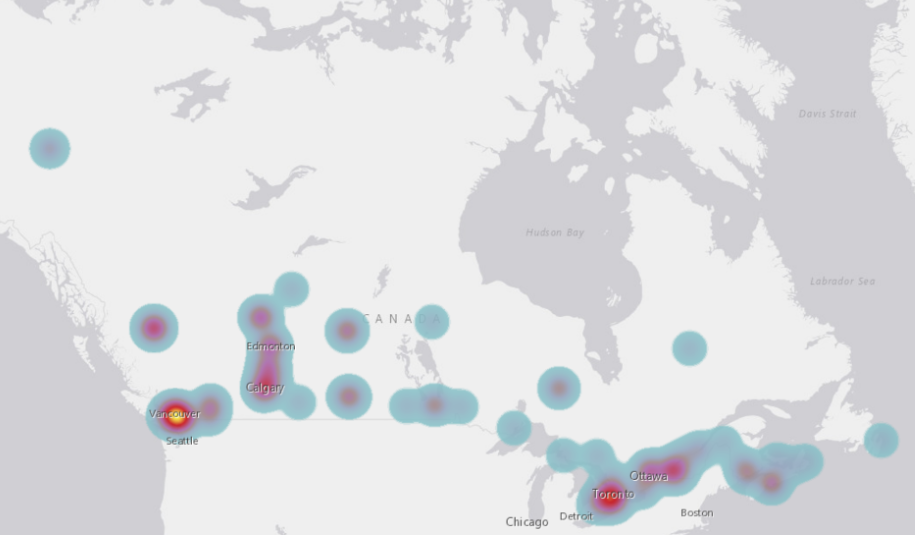
Identifying harmful “Conversion Therapy” practices in all its forms
Amrit Tiwana
October 3, 2021 • 7 Min Read
“Conversion therapy” is a term used to refer to widely discredited practices that harm Two-spirit/lesbian, gay, bisexual, transgender, queer plus (2S/LGBTQ+) individuals. These practices may not be advertised publicly since they have been denounced by many medical and human rights organizations. However, conversion therapy practices continue to occur across the globe, including Canada. Wide denunciation may have led conversion therapy providers to operate ‘underground’ and advertise their services in covert ways. This article explains what conversion therapy looks like in Canada today and offers some questions for you to ask of providers in order to detect probable conversion therapy services and avoid the potential harm of these services. 2S/LGBTQ+ affirming mental health supports are also provided below.
What is Conversion Therapy?
“Conversion therapy”, also known as sexual orientation and gender identity and expression change efforts (SOGIECE), refers to any practice designed to change, deny, or discourage one’s feelings of sexual attraction to members of the same gender, LGBQ identity, non-conforming gender expression, or gender identity that differs from sex assigned at birth.1 Conversion therapy practices take many forms, including psychotherapy, medical, faith-based, and punitive.2 Examples include individual talk therapy or psychoanalysis, praying and bible study, and forceful participation in traditionally gender specific activities (e.g., sports, hunting, cooking, playing with dolls, etc.).2
Who Provides Conversion Therapy?
Conversion therapy providers include licensed mental health providers (e.g., psychotherapists, psychologists, and psychiatrists), unlicensed health providers, life coaches, and religious leaders (e.g., pastoral counsellors).2,3 Conversion therapy attempts have also involved parents, government agencies, and school personnel.2
Does Conversion Therapy Work?
No. There is no credible scientific research that proves conversion therapy is effective or psychologically safe.4 Many medical and human rights associations including the World Health Organization, World Psychiatric Association, Pan American Health Organization, Canadian Psychological Association, Canadian Psychiatric Association, Canadian Paediatric Society, Canadian Association of Social Workers, American Medical Association, Human Rights Campaign, and Amnesty International have confirmed a lack of rigorous scientific evidence to support the effectiveness of conversion therapy.4,5,6
Is Conversion Therapy Harmful?
Previous research suggests conversion therapy negatively impacts and stigmatizes 2S/LGBTQ+ persons, and can lead to increased anxiety, depression, self-hatred, post-traumatic stress disorder, and many lifelong psychological and social issues.7 According to the Sex Now 2011/12 survey of Canadian sexual minority men, exposure to SOGIECE was associated with increased loneliness, regular illicit drug use, suicidal ideation, and suicide attempts.7
Is Conversion Therapy still happening? How can we stop it?
Yes. A current study at Simon Fraser University is examining the geographic distribution of conversion therapy practices reported by people with direct and indirect experiences with conversion therapy in Canada. The study finds that conversion therapy is still pervasive across the nation (see Figure 1).8 According to three national surveys7,9,10 that have measured the prevalence of conversion therapy practices in Canada, approximately 4 to 11% of sexual and gender minority Canadians have been to some form of organized conversion therapy practice. This percentage corresponds to tens of thousands of 2S/LGBTQ+ Canadians.11
To date, five Canadian provinces and territories and several cities have legislative bans to stop conversion therapy.12 On the national level, the Government of Canada introduced Bill C-6 on October 1, 2020 to ban conversion therapy practices; while this Bill did not reach the Senate before adjourning, the bill received the support of a majority of Members of the House of Commons (vote: 263 yea, 63 nay),13 confirming that these practices are incompatible with Canadian values. Although criminal law reform is an important step towards 2S/LGBTQ+ equity, it may unintentionally drive some conversion therapy practices ‘underground’ and lead providers to advertise their services in covert ways.
Beyond legislative action, supportive social environments involving gay straight alliances or gender and sexuality alliances (GSAs) will help with the inclusion and affirmation of 2S/LGBTQ+ identities. Additionally, 2S/LGBTQ+ affirming health services and education (including sex education) should be expanded to help people understand their gender and sexuality without feeling the need to suppress them through SOGIECE. Lastly, further research is needed to understand the nature and scope of conversion therapy practices to understand the effectiveness of legislative bans.

How to ensure you and your loved ones receive mental health services that align with 2S/LGBTQ+ affirming values.
Many conversion therapy providers do not describe themselves as “conversion therapists”,15 and so it is important to ensure you and your loved ones understand providers’ stance on 2S/LGBTQ+ identities (i.e., supportive of these identities and expressions, or opposed to them) before engaging. Here are some tips to assess whether a provider may offer conversion therapy or similarly anti-2S/LGBTQ+ services:
- Take the time to find a therapist YOU feel comfortable with. Most therapists offer free 10-15 minute consults.
- It’s ok with leave if you aren’t comfortable with a therapist.
- Ask questions to possible therapists like “How do you support client in expressing their 2S/LGBTQ+ identities?” or “Tell me about your approach in working with S2/LGBTQ+ clients.”
- Check their website for the use of phrases such as “problems related to sexuality”, “homosexually dissatisfied”, “unwanted same-sex attractions”, or “gender confusion”. This can be a sign that the therapist views their clients’ gender and sexuality as a source of their mental health challenges.
- Read any reviews available online.
- Search for the therapist online to find information regarding their credentials, interests, and views.
- For more information on choosing a therapist see “Navigating a Map of Choices”.
Locating Affirming Resources
Looking for 2S/LGBTQ+ affirming therapists familiar with SOGIECE? You can use the filters available on MindMap BC to locate a provider who is affirming. You can also check out the following article on "Conversion Therapy & Supporting Survivors"
References
- Bishop A. The Global Reach of So-Called Conversion Therapy [Internet]. OutRight Action International; 2019. Available from: https://outrightinternational.org/reports/global-reach-so-called-conversion-therapy
- Adamson TM, Wallach S, Garner A, Hanley M, Howell S. The global state of conversion therapy - a preliminary report and current Evidence Brief. 2020.
- Karten EY, Wade JC. Sexual orientation change efforts in men: A client perspective. The Journal of Men's Studies. 2010;18(1):84–102.
- Cramer RJ, Golom FD, LoPresto CT, Kirkley SM. Weighing the evidence: Empirical assessment and ethical implications of conversion therapy. Ethics & Behavior. 2008;18(1):93–114.
- Ashley F. Model law – prohibiting reparative practices. SSRN Electronic Journal. 2019.
- Wells K. Conversion Therapy in Canada: A guide for legislative action (Revised Edition) [Internet]. MacEwan University. 2020.
- Salway T, Ferlatte O, Gesink D, Lachowsky NJ. Prevalence of exposure to sexual orientation change efforts and associated sociodemographic characteristics and psychosocial health outcomes among Canadian sexual minority men. The Canadian Journal of Psychiatry. 2020;65(7):502–9.
- Tiwana A. Geographic Distribution of Conversion Therapy in Canada. Undergraduate Research Symposium 2021 [Internet]. 2021; Vol. 2. Available from: https://journals.lib.sfu.ca/index.php/ugrs/article/view/2886
- Salway T, Juwono S, Klassen B, Ferlatte O, Ablona A, Pruden H, et al. Experiences with sexual orientation and gender Identity conversion therapy practices among sexual minority men in Canada, 2019–2020. PLOS ONE. 2021;16(6).
- Conversion therapy [Internet]. Trans PULSE Canada. 2020. Available from: https://transpulsecanada.ca/results/quickstat-1-conversion-therapy/
- Salway T. Protecting Canadian sexual and gender minorities from Harmful sexual orientation and gender identity change efforts [Internet]. Community-Based Research Centre. Available from: https://www.cbrc.net/protecting_canadian_sexual_and_gender_minorities_from_harmful_sexual_orientation_and_gender_identity_change_efforts
- Legislation Map [Internet]. No Conversion Canada. Available from: https://www.noconversioncanada.com/legislation-map
- VOTE NO. 175 43RD PARLIAMENT, 2ND SESSION [Internet]. House of Commons Canada. 2021. Available from: https://www.ourcommons.ca/members/en/votes/43/2/175
- Tiwana A, Salway T. Geographic Distribution of Conversion Therapy in Canada. Report forthcoming 2021. (contact travis_salway@sfu.ca for information)
- Brush J. Conversion Ministries and Ex-Gay Ministries [Internet]. Ohio Psychological Association. 2021. Available from: https://ohpsych.org/news/549803/Conversion-Ministries-and-Ex-Gay-Ministries.htm
← Previous Article
Supporting Survivors of Conversion TherapyNext Article →
Exploring Eco-Anxiety with Mental Health Providers